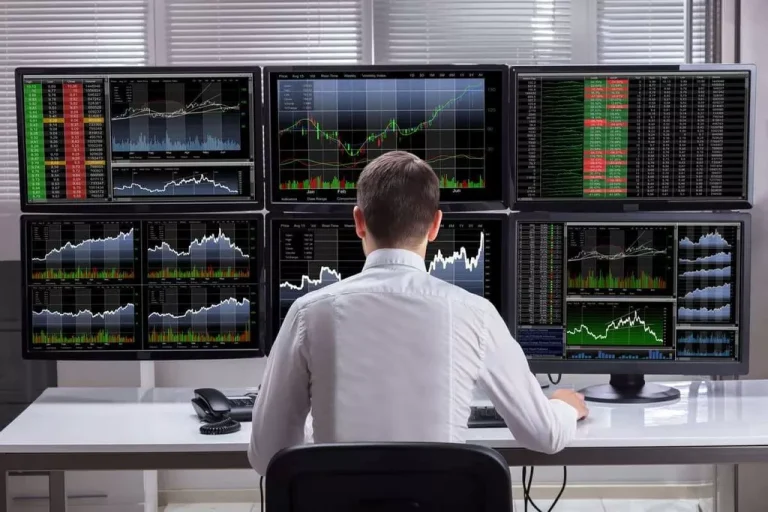Trading Volume: Analysis and Interpretation
Content
One of the easiest ways to identify volume is on a bar chart, which is a chart made up of bars showing trading volume over a specific period of time. When the bars move higher than the average, it can indicate high trading volume at forex brokers by volume a specific price for that particular time frame. In stock trading, volume refers to the number of shares traded for a particular stock over a specific period, usually one trading day. Price moves made on low volume may be said to “lack conviction” and could be viewed as being less predictive of future returns. You should also consider seasonal differences in absolute volume amounts and volume trends.
How does the relative volume indicator work?
You might want to look at “dollar volume” or “dollar-based trading volume” from time to time. In this case, you’re not just looking at the number https://www.xcritical.com/ of shares trading hands but also accounting for the average share price. This helps you compare the market’s trading interest in different stocks. High volume can provide valuable data for investing decisions, as it often reflects significant interest in a company. However, it’s essential to analyze whether this volume correlates with positive financial news or company performance. Brokers typically provide tools to access detailed volume data and order books to help investors make informed decisions.
- There are always risks, and no tool or strategy guarantees success, so it’s essential for every investor to evaluate what risks are acceptable to them.
- Trading volumes are higher at the end of the day as many traders close their open positions.
- By examining this indicator, traders can determine whether high volume is likely to precede a significant price movement.
- Reactivity – Because trades are less frequent and there are usually fewer shareholders invested in low-volume stocks, low-volume stocks are more likely to move on news events.
- Investing in stock involves risks, including the loss of principal.
- 71% of retail client accounts lose money when trading CFDs, with this investment provider.
Create a free account to unlock this Template

Going by the assumption that smart money always makes smart choices, the expectation is bearish, and hence one should look at selling opportunity in the stock. If the price of a stock has moved in one direction for a long time Blockchain and volume begins to increase at the same time that prices start to move very little, it can signal a reversal. So if stock prices were on an upward trajectory, changes start to slow and volume increases, it might mean the trend is about to reverse. If we assume the specified time period is 10 days and the RVOL ratio for a stock is 1.0, the formula indicates that the current volume trading is the same as its 10-day average volume.
What High Volume But No Price Movement Mean: Detailed Explanation
When more of a stock is traded actively, trading volume is high, while volume slumps as sales slow. Buying climax, also called blow-off, occurs at market tops prices suddenly begin to rally sharply after a long advance, accompanied by a large jump in trading activity, and then peak abruptly. Even if the RVOL is high and the stock breaks out above key technical levels, it’s not always right to buy the stock. It could be a false breakout or a ‘pump and dump scheme’, where stock prices look like they are moving higher but end up reversing by the end of the day. That’s why it’s always important to manage your risk carefully, especially during high volatility.

It’s crucial to regularly review these indicators and adapt your strategy based on the evolving market conditions to maximize returns. High trading volume with no significant price movement can be puzzling. Typically, when there’s a lot of trading activity, we expect to see a corresponding rise or fall in stock prices. When combined with various volume indicators, investors can better distinguish between meaningful market moves and temporary fluctuations.
The buyers or sellers may appear to be evenly matched, but this could change if the buyers or sellers complete their order – which may lead to a market imbalance and a sharp price move. Imagine that Tesla’s 10-day average trading volume is 150 million shares per day. The current volume is 150 million shares, so the RVOL ratio is 1.0. If some important news is released and the current volume increases to 300 million shares, the RVOL indicator would be 2.0 – twice the 10-day average volume. If on a quiet trading day, however, the current volume is only 75 million shares, the RVOL indicator would be 0.50 – half the 10-day average volume.

This material is not intended as a recommendation, offer, or solicitation to purchase or sell securities, open a brokerage account, or engage in any investment strategy. VWAP represents the average price of a stock based on volume and price during a trading session. This metric may often be used by institutional investors to ensure they’re buying at a fair price relative to the days average. Institutional trading can definitely cause high volume without significant price movement. Large institutions often execute substantial transactions in a way that minimizes price impact, for the purposes of maintaining the value of securities or adding liquidity to the market.
IG International Limited is part of the IG Group and its ultimate parent company is IG Group Holdings Plc. IG International Limited receives services from other members of the IG Group including IG Markets Limited. Morgan Wealth Plan can help focus your efforts on achieving your financial goals.
Supporters of the method argue that the appearance of a large order immediately triggers many small orders, increasing the volume. The inference is quite clear – high volumes and a price increase confirm that large, influential market participants are positioning themselves to buy the stock. Volume plays a very integral role in technical analysis as it helps us to confirm trends and patterns. Consider volumes as a means to gain insights into how other participants perceive the market. Changes in volume can clue investors into the strength of the breakout. Little change in volume suggests investors are paying the breakout little heed, while big changes in volume indicate a strong new trend.
It is used together with technical analysis tools to determine market strength and trend direction. The On Balance Volume (OBV) indicator was developed by Joseph Granville in 1963. It is used to measure the flow of an asset’s trading volume to assess the balance of power between buyers and sellers in financial markets. It helps to determine the trend’s direction and the potential trend’s strength. If the price breaks out key levels or a trend line, and at the time of the breakout, an increase in volumes is visible, the breakout may mean a trend movement. If the volumes at the time of the breakout are unchanged or decreasing, then the breakout is false.
Fewer traders are participating, and the selling pressure may be dissipating. Indeed, the downtrend could be losing momentum, but it does not guarantee a reversal immediately. It simply suggests that there is less conviction behind the selling.
The direction of the indicator is what is most important to investors. When price and OBV are moving up or down together, it is likely the trend will increase in strength. When stock volume starts to decrease, it can signal that investors are less enthusiastic about a company.
In the next section (next H4 candle), the price continues to grow, but the volumes of the NV indicator decrease to 14.78K. The OBV lows are almost at the same level, while the price lows are falling. The downtrend is not confirmed by a decrease in volumes, while the chart shows a divergence. The price decline quickly ends, and a long-term uptrend begins, confirmed by the volume growth.
The decrease in trading volumes after intensive growth suggests that traders are sticking to the wait-and-see approach. This is the number of stocks bought and sold during one trading session. As a rule, the average value for a fixed period of time (usually 90 days) is analyzed.
The data are calculated by the exchanges, and then the information is posted on the analytical portals or websites of the exchanges for public access. If both the price and the volume are increasing this only means one thing – a big player is showing interest in the stock. Going by the assumption that smart money always makes smart choices, the expectation turns bullish, and hence one should look at buying opportunity in the stock. There are a number of volume indicators that could help traders make investment decisions based on their approach and goals.
